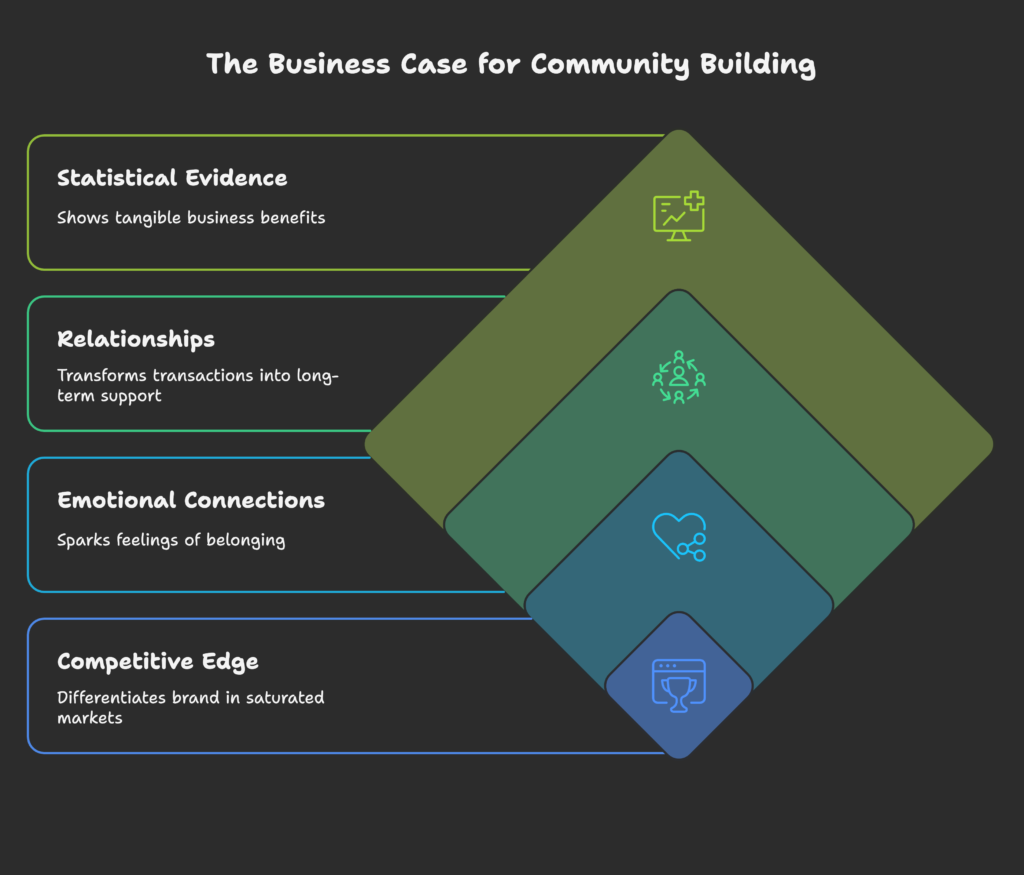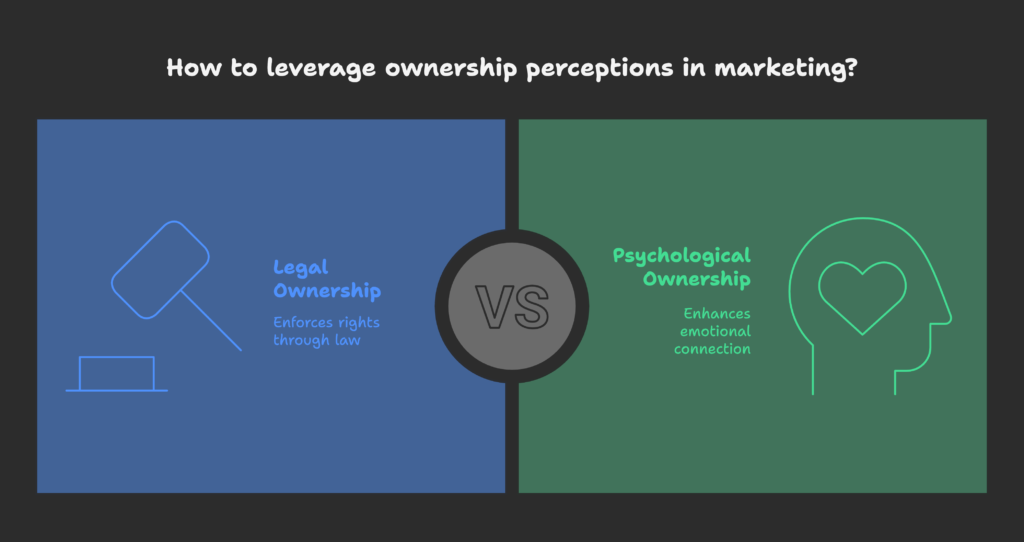Have you ever wondered why some brands make you feel like you are part of something bigger? Why do certain products feel more personal and meaningful, even before you buy them? By reading this article, you’ll discover how the powerful idea of the “Belonging Effect” can reshape your approach to marketing and customer relationships. Ready to learn how to form lasting connections that go beyond simple transactions? Let’s jump right in!
In this first section, we will introduce the basic concept of the Belonging Effect and why it matters for both consumers and businesses. By the end of this section, you will see how a sense of belonging can turn ordinary shoppers into passionate brand advocates. Ready to dig deeper? Let’s move on!
Definition and Conceptual Framework
So, what exactly is the Belonging Effect? It is the idea that people crave meaningful connections with brands, products, and other consumers—much like they do in personal relationships. This desire to belong influences every step of the buying process, from initial discovery to final purchase and beyond.
The Psychological Foundation of the Belonging Effect: At its core, the Belonging Effect is rooted in consumer behavior theories that explain why people connect with products on an emotional level. When customers feel understood, welcomed, and included, they form stronger attachments to brands.
Historical Evolution: Marketing used to be mostly about features and product-centric campaigns. Over time, businesses realized that focusing on a community-centric approach drives deeper loyalty. Instead of just highlighting specs, modern marketers encourage customers to share stories, form relationships, and build a sense of identity around the brand.
Belonging as a Fundamental Need: According to Maslow’s hierarchy, people strive for love and belonging right after their basic needs are met. A brand community can satisfy this need by offering acceptance, recognition, and a chance to connect with others who share similar interests.
Identity, Community, and Consumption: When people identify with a group, they often use certain products to express their membership. This intersection means that consumption is no longer just a practical act; it becomes a statement of who you are and what you stand for.
We’ve explored what the Belonging Effect is and how it has evolved. But why is it so crucial for businesses? Let’s see how community-focused strategies can bring massive benefits in the next section!
The Business Case for Community Building
This section will show you how building a sense of belonging can give your business a real boost. By the end, you’ll understand why nurturing a community can outperform any standard marketing tactic.

Beyond Features—Emotional Connections Matter: Today’s market is crowded. Having great features is not enough. Brands that spark an emotional response and make people feel at home stand out from the noise.
From Transactions to Relationships: Communities transform one-time buyers into long-term supporters. Instead of seeing customers as mere transaction points, you can see them as members of a shared journey.
Statistical Evidence: Studies show that higher community engagement often leads to improved customer retention and increased brand loyalty. When people feel they “belong,” they come back more frequently and share their experiences with friends.
- Increased retention rates
- Higher average order values
- More word-of-mouth referrals
Gaining a Competitive Edge: In saturated markets, price and product features start to blend together. Building a community differentiates you, giving you an advantage that is hard to copy.
Now that you know the business side of belonging, let’s explore the deeper psychological reasons behind this powerful effect.
The Psychological Importance of Belonging
In this section, we dive into the emotional and neurological roots of belonging. By the end, you’ll see why the need to belong can actually override practical considerations like price.
A Core Psychological Need: Belonging is as crucial to our well-being as food and shelter. When we sense we are included in a group, our brains reward us with positive emotions that reinforce our behavior.
Feelings of Inclusion and Acceptance: Think about how good it feels to be truly accepted—this drives our decision-making in many areas, including what we buy. If owning a product means acceptance by a desired group, we’re much more likely to purchase.
Neurological Basis for Belonging: Research shows that social pain lights up the same areas of the brain as physical pain. On the flip side, social pleasure can make us feel incredibly rewarded. This is why brand communities can become so addictive—they tap into these social circuits.
Cross-Cultural Perspectives: Every culture has unique ways of fostering group identity and togetherness. Whether you live in a collectivist society or an individualistic one, we all share the basic desire to connect.
You’ve just learned how powerful belonging can be on a deep, psychological level. Next, we’ll anchor these insights in established consumer psychology theories to see exactly how belonging shapes buying behavior.
Theoretical Foundations of Belonging in Consumer Psychology
Here, we connect belonging to formal theories in consumer psychology. By the end, you’ll understand how social identity and psychological ownership transform the way people interact with brands.
Social Identity Theory and Group Affiliation
Signal of Group Membership: When you buy or use certain products, you show your affiliation with a group that shares similar values or styles. Think about wearing a sports team’s jersey—you’re broadcasting your identity.
In-Group Favoritism: People naturally favor those they see as part of their group. This can lead to stronger loyalty for a brand that symbolizes that in-group.
Brand Loyalty Through Social Identity: When you have a close group tied together by a brand, switching products can feel like betraying your friends or your identity.
Shared Consumption Experiences: Group activities like fan meetups or online forums can increase bonds between members, deepening the feeling of community.
Psychological Ownership and Pre-Possession

Legal vs. Psychological Ownership: Sometimes we feel we “own” an item before officially buying it. That psychological ownership can be stronger than any legal document.
Attachment Before Purchase: Marketers often encourage this emotional attachment with “try before you buy” demos or interactive previews.
The Power of Anticipation: Waiting for a new product can build excitement, reinforcing our sense of ownership even before we actually have it. We start to talk about it as if it is already ours.
Pre-Ownership Language Patterns: Using phrases like “your new phone” or “my next car” prompts customers to form an emotional bond earlier.
Next, we’ll look at how these theories translate into real consumer behavior triggers. Stay with us to see how belonging makes price and other barriers less important!
Belonging Triggers in Consumer Behavior
Welcome to the section where we link theories to everyday shopping behavior. By the end, you’ll see how belonging can override rational thinking and influence what people buy.
Emotional vs. Rational Decisions: A sense of belonging often speaks to our emotions. While we might weigh pros and cons logically, our emotional need for connection can tip the scales.
Price Sensitivity Drops: Have you ever spent more on a product because you felt it brought you closer to a certain group? Many consumers pay a premium for that emotional benefit.
The Power of Shared Values: When brands promote values like sustainability or community support, people who hold similar beliefs are drawn to them more strongly.
Exclusivity vs. Inclusivity: Some brands make members feel special by keeping the group small and exclusive, while others grow large, inclusive communities. Both can be effective, as long as they nurture a genuine sense of belonging.
Having covered the triggers that make us buy, let’s move on to one of the biggest manifestations of the Belonging Effect: brand communities and how they develop!
Brand Communities and Their Development
In this section, we reveal how brand communities form and why they can be so powerful for both the company and the consumer. By the end, you’ll know the core components that make these groups thrive.
Anatomy of Successful Brand Communities
Core Components: The most vibrant communities share certain traits, like clear values, a common purpose, and regular opportunities to interact.
Shared Values and Purpose: A community becomes strong when members feel united by something bigger than just a product. They believe in the vision or lifestyle that the brand represents.
Spaces for Interaction: Effective communities give members a place to talk, collaborate, and bond—such as online forums, social media groups, or in-person gatherings.
Balancing Brand Control and Autonomy: Too much brand intervention can stifle authenticity, but total freedom might lead to confusion. The best communities find a sweet spot where members feel empowered while still staying aligned with brand goals.
From Customers to Community Members: The Transformation
Psychological Shift: Buying a product is a transaction. Becoming part of a community changes it into a relationship. People begin to identify themselves as “members” instead of “customers.”
Changing Consumer Identity: When someone is active in a brand community, they adopt a new label—like “I’m a runner” or “I’m a gamer”—which strengthens their loyalty.
The Emotional Journey: This involves discovery, initial engagement, deeper participation, and eventually advocacy. As members move through each stage, their bond with the brand grows.
Levels of Participation: Not everyone engages at the same intensity. Some lurk and read content silently, while others become super-users who lead discussions.
Community-Driven Content and Co-Creation
User-Generated Content (UGC): When people create posts, reviews, or videos about your brand, it’s a sign they truly belong. UGC also makes marketing more authentic because it comes from real customers.
Harnessing the Need to Belong: People who feel part of a community love to share their experiences and give advice. They want to be recognized for their contributions.
Product Development and Innovation: Involving the community in brainstorming sessions or beta tests leads to better products and higher customer satisfaction.
Customer Expertise and Passion: Loyal fans can become your best ambassadors, helping you refine products and promote them to others.
The Relationship Between Brand Loyalty and Community Belonging
Now we’ll see why communities can dramatically enhance loyalty. By the end, you’ll grasp the long-term value of strong community ties for your brand.
Connecting Community Participation to Brand Loyalty: Research shows that belonging to a community can significantly boost repeat purchases and overall brand satisfaction.
Customer Retention and Lifetime Value: Community members tend to stay longer and buy more because they feel attached to the group and what it represents.
Loyalty Programs vs. Genuine Community: Simple point-based loyalty programs can’t compare to the emotional bonds formed in real communities. Emotional loyalty goes beyond discounts and rewards.
Emotional vs. Transactional Loyalty: Transactional loyalty is easily broken by a better deal. Emotional loyalty, based on shared identity and belonging, is far more resilient.
So, how do you make this happen in an online store or e-commerce setting? Let’s explore practical strategies in the next section!
Implementing the Belonging Effect in E-commerce Strategy
This section will guide you through creating digital spaces, using the right language, designing products for communal experiences, and onboarding people so they feel they already belong. Excited? Let’s go!
Creating Digital Spaces for Community Building
Design Principles: Online communities flourish when they are easy to navigate, visually appealing, and mobile-friendly.
Interactive Features: Forums, live chats, and Q&A sections encourage real dialogue. These tools help members form bonds and share knowledge.
Moderation Approaches: Setting clear rules and guidelines keeps conversations respectful and valuable, ensuring that members feel safe to participate.
Integration with E-commerce: Allow community members to easily shop within the same platform. Seamless transitions from discussion to purchase benefit everyone.
Language and Communication Strategies
Pre-Ownership Language: Use words like “your new look” or “our community” to create immediate feelings of ownership and belonging.
The Power of Possessive Pronouns: When you say “my cart” instead of “the cart,” customers form a personal link to the products inside it.
Authentic Communication: Speak in a friendly, honest tone. Overly polished marketing speak can seem distant and insincere.
Storytelling Techniques: Share real stories of how members have solved problems or found new interests through your brand community. Stories unite people.
Product Design for Community Engagement
Community-Oriented Features: Include built-in features such as comment sections, “share with a friend” buttons, or collaborative shopping lists.
Shared Experiences: Products that are used in groups—like workout apps or multiplayer games—naturally bring people together.
Physical and Digital Touchpoints: A product’s unboxing experience or interactive guides can further reinforce a sense of belonging.
Designing for Interaction: Make it easy for users to leave feedback and help each other. The best designs encourage people to connect.
Onboarding to Ownership: Creating Immediate Belonging
First Impressions Count: Greet new users with a warm welcome message or a quick tour that helps them feel at home.
Welcome Rituals: Hosting a live Q&A or spotlighting new members can make them feel special right away.
Early Touchpoints with Existing Members: Introduce newcomers to community leaders or mentors who can guide them.
From Prospect to Advocate: As users advance, they can take on bigger roles—like writing reviews or leading discussions—further deepening their bond.
Now that you have a strategic blueprint, it’s time to measure the impact. Let’s see how to track community health and economic outcomes next!
Measuring the Impact of Community and Belonging
In this section, you’ll discover how to keep tabs on both the human and financial sides of community building. By the end, you’ll know which metrics matter most.
Key Performance Indicators for Community Health
Beyond Simple Participation: Don’t just count how many people join—look at how often they interact and how meaningful those interactions are.
Quality and Depth: Track how many people contribute valuable content, not just how many comments are posted.
Sentiment Analysis: Tools can measure whether the community feels positive, neutral, or negative.
Growth and Retention: Healthy communities grow steadily and keep existing members active over time.
Economic Impact of Strong Product Communities
Revenue Differentials: Loyal community members generally spend more and purchase more often than other customers.
Word-of-Mouth Marketing: Satisfied members naturally tell friends and family about the brand, reducing your marketing costs.
Reduced Costs: Advocates can answer questions and solve problems for newcomers, cutting down on support expenses.
Product Development Efficiencies: Feedback loops within the community help refine products faster and cheaper.
Market Research Methodologies for Belonging
Surveys: Ask customers how connected they feel to the community and why.
Qualitative Research: Conduct focus groups or interviews to discover the emotional drivers behind belonging.
A/B Testing: Experiment with new community features or messages, then measure changes in engagement and sales.
Longitudinal Studies: Track how belonging evolves over time, from a customer’s first touchpoint to their final purchase.
After data comes real-life examples! Up next, we’ll see how this all plays out in actual brand communities.
Case Studies: Successful Implementation of the Belonging Effect
Welcome to the part where theory meets practice. We’ll look at technology, lifestyle, small business, and B2B communities that have thrived by creating a strong sense of belonging.
Consumer Technology Brand Communities
Apple’s Ecosystem: Apple fosters a unique identity around its products, from iPhones to MacBooks. The “Apple identity” is supported by user forums and meetups where fans share tips and pride.
Gaming Communities: Players bond over shared missions and achievements. They communicate across forums, livestreams, and conventions, building strong friendships and loyalty.
Software Communities: Open-source or professional software communities let people collaborate on new features. This involvement creates dedicated supporters.
Innovation Through Community: Tech brands that actively gather user input can test and improve products quickly, gaining an edge in fast-moving markets.
Lifestyle Brand Communities
Fitness and Wellness: From running clubs to yoga retreats, these brands emphasize shared goals, like achieving better health, and encourage members to celebrate each other’s successes.
Food and Beverage Brands: Whether it’s specialty coffee or plant-based foods, customers bond over recipes, experiences, and a common foodie identity.
Fashion Communities: Members connect through style tips, brand hashtags, and social media challenges, using clothing to reflect their personal identity.
Experience-Based Brands: Lifestyle brands often host events or workshops that bring the community together in person, deepening emotional bonds.
Small Business Success Stories
Resource-Efficient Strategies: Even with limited budgets, local shops or niche online stores can create tight-knit groups. Simple tools like Facebook Groups or email newsletters can do wonders.
Direct Relationships: Small businesses often know their customers by name, building trust and familiarity.
Differentiation in Niche Markets: A dedicated community can make your brand stand out if you serve a very specific audience.
Scaling Up: What starts small and local can expand globally if the sense of belonging remains genuine and inclusive.
B2B Product Communities and Professional Networks
Professional Tools and Communities of Practice: B2B communities help users share knowledge and best practices, boosting everyone’s performance.
Industry-Specific Knowledge Sharing: Members in specialized fields come together to solve problems faster and develop new ideas.
How B2B Differs from B2C: The sense of belonging often involves professional status and expertise, but the emotional rewards can be just as strong.
Belonging Among Decision-Makers: When key stakeholders in a company participate, they become more invested in your product’s success.
Now that you’ve seen real-world success, let’s talk about practical strategies you can apply right away to build belonging in your own community.
Practical Strategies for Cultivating Belonging
In this section, we’ll cover the fundamentals of building a welcoming environment, nurturing trust, personalizing the experience, and using technology to strengthen community ties.
Community Building Fundamentals
Valuing Every Voice: Show members that their opinions count. Create polls or prompts that spark diverse conversations.
Empathetic Listening and Response: Encourage respectful discussions, and show genuine appreciation when members share their perspectives.
Gathering Insights from Diverse Stakeholders: Different backgrounds bring fresh ideas. Embrace that variety.
Equity and Inclusion: Make sure everyone feels welcome. Clear policies against discrimination help people feel safe.
Authenticity and Trust Development
Being True to Your Brand Purpose: Don’t just talk about values—live them through real actions.
Creating Psychological Safety: Encourage openness, but also maintain respectful boundaries to protect the group.
Transparent Communication: Keep members informed about changes, improvements, or setbacks. Honesty builds trust.
Credibility Through Consistency: Follow through on promises. Consistency in word and deed earns long-term loyalty.
Personalization and Recognition
Acknowledging Contributions: Simple gestures like “member of the month” spotlights can boost morale.
Personalized Experiences: Tailor content or recommendations based on each member’s interests. People love to feel seen.
Celebrating Achievements: If someone reaches a milestone or provides valuable insights, celebrate openly.
Scalability Balance: As you grow, automate some processes but keep personal touches where it matters most.
Leveraging Technology for Connection
Digital Tools: Use community platforms, chat apps, or virtual event software to bring people together.
AI-Assisted Personalization: Smart recommendations or content suggestions can help members find what they need faster.
Mobile Strategies: Many prefer connecting via their phones, so ensure your community space is mobile-friendly.
Online and Offline Touchpoints: Combine virtual meetups with in-person events to offer varied ways to connect.
Building belonging should be done responsibly. Let’s look at the ethical side of community management next.
Ethical Considerations and Best Practices
This section covers the do’s and don’ts of building communities. By the end, you’ll know how to keep your strategies genuine, inclusive, and privacy-friendly.
Authentic versus Manipulative Community Building
Genuine Development vs. Exploitation: True community building seeks to help and unite members, not just profit from them.
Authentic Brand Purpose and Values: Make sure your mission aligns with member interests. Forced or fake values are quickly spotted.
Transparency in Management: Always be open about policies, rules, and changes. Hidden agendas can destroy trust.
Long-Term Consequences: Manipulative tactics might boost short-term sales but harm your reputation and retention.
Inclusivity and Diversity in Product Communities
Accessible Communities: Design features for people of different backgrounds, abilities, and preferences.
Addressing Exclusivity: Work to prevent gatekeeping or unwelcoming behaviors. Everyone should feel they can join and belong.
Cultural Sensitivity: If you operate globally, adapt content and moderation to respect various cultures.
Diverse Perspectives: Embracing multiple viewpoints can spark innovation and more meaningful connections.
Privacy and Data Ethics in Community Management
Responsible Data Use: Collect data only for valid purposes that serve the community’s needs.
Consent and Transparency: Let members know how their data will be used and get their permission when required.
Balancing Personalization and Privacy: Personal recommendations are great, but respect boundaries. Share data responsibly.
Legal and Ethical Frameworks: Comply with regulations like GDPR or other data protection laws to maintain trust.
With these ethical considerations in mind, it’s time to look forward. What does the future of community-based marketing hold? Let’s find out!
Future Trends in Community-Based Marketing
Here, we explore the emerging technologies and shifting landscapes that will shape how we foster belonging in the years to come.
The Impact of Emerging Technologies
Virtual and Augmented Reality: Imagine immersive community experiences where members interact in virtual spaces, making them feel closer than ever.
AI-Facilitated Engagement: Chatbots and AI can help moderate forums, provide personalized resources, and automate customer support.
Blockchain and Decentralization: Some communities may adopt decentralized models where members share ownership of the brand or platform.
Voice and Gesture Interfaces: Conversational tools might soon let us build and maintain communities simply by speaking or gesturing.
Evolution of Social Commerce
Integrated Purchasing: Social media and community platforms are merging with e-commerce, allowing instant buys directly within community chats or posts.
Live Shopping Events: Community members can watch live demos and shop collectively, fueling excitement and shared experiences.
Peer Recommendations: Social proof is getting more advanced, with algorithms suggesting products based on direct community feedback.
Blurred Lines: As these features grow, the difference between social networking and e-commerce will continue to fade.
Global and Cross-Cultural Community Development
Breaking Geographical Barriers: Online communities mean brands can unify people from different continents, creating global ties.
Translation and Adaptation: Tools that automatically translate discussions help members communicate across language barriers.
Local Chapters, Global Reach: Some brand communities organize local groups under a global umbrella, allowing for both localized bonding and international connection.
Cross-Cultural Exchange: When people learn from each other’s cultures, it enriches the community and product innovation.
Now, let’s bring it all together in the final section and see how belonging will continue to shape the future of business.
Conclusion: The Future of Belonging in Business
You’ve made it to the end! In this closing section, we’ll wrap up the key ideas and offer a look at how you can apply them for long-term success.
The Transformative Power of Community: The Belonging Effect changes basic transactions into meaningful relationships, reshaping customer expectations. People want more than products; they want a sense of identity and connection.
Community as a Sustainable Advantage: Businesses that invest in belonging enjoy loyal followings, strong word-of-mouth, and easier product innovation. In competitive markets, community is your secret weapon.
From Products to Relationships: The old days of pushing features are gone. We’re entering an era where success hinges on how well a brand can form genuine relationships.
Long-Term Value Creation: Belonging drives repeat business, positive referrals, and brand resilience, helping companies thrive in fast-changing times.
Strategic Implementation Recommendations
Phased Approach: Start small—maybe with a single discussion forum or a limited beta group—then scale as engagement grows.
Resource Allocation: Invest in community managers, analytics tools, and platform improvements to keep the space healthy.
Belonging Across the Customer Journey: Don’t wait until after a sale to invite people into your community. Mention it during discovery, browsing, and at checkout.
Measure and Communicate Value: Track both engagement (like active users) and financial returns (like repeat sales) to show community ROI.
Final Thoughts on the Endowment Effect and Belonging
Ownership Psychology and Community: When customers start saying “my new headphones” before buying, you know they’re already invested, mentally and emotionally.
Pre-Ownership Language: This subtle marketing approach can spark immediate belonging, even before the purchase.
Emotionally Connected Customers: In the end, people who feel part of something bigger are more likely to stick around and advocate for your brand.
The Future Landscape: As commerce evolves, community-centered approaches will become the norm, shaping how we discover, buy, and talk about products.
Remember, if you run a Shopify store, you can give your business a boost by using the Growth Suite application. It can help you manage your community, increase sales, and keep your shoppers feeling that special sense of belonging they crave!




